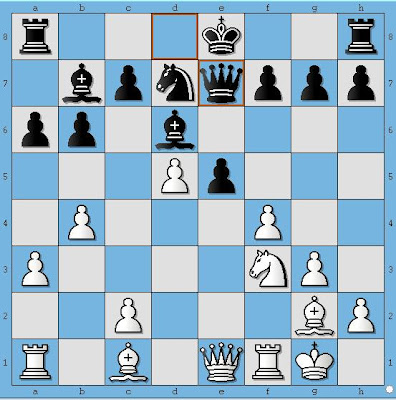Doing penitence.

.
.
.
Diagram 6

.
.
.
White to move.
Here I took back with the king, consciously stepping into a pin. I completely overlooked that white can take with his rook first. I calculated that when he took with the pawn, I had a discovered attack.
Diagram 5

.
.
.
Black to move.
Here I played h6. I had seen the pin along the c-file before, but I forgot to check it in a new situation.
Diagram 4

.
.
White to move.
Here I designed a combination based on the discovered attack against Bb7. I thought queentrade and a wining endgame was unavoidable. What I missed is that after the pawnpush d6 black can take back with c7, thus covering the bishop with the queen.
Diagram 3

.
.
.
White to move
However I actually was looking at a move like Nxg6, I didn't see I could just play it. The strange thing is, my 1925-rated opponent didn't see it either. A typical case of problems with visualising a chain of attack alternating with a chain of counterattack. Cost: 0.5 point.
Diagram 2

.
.
.
Black to move
Allthough I looked at Nxb3, I didn't see I could just play it. Again a typical case of problems with visualising a chain of attack alternating with a chain of counterattack. Cost: 1 point.
Diagram 1

.
.
.
White to move
My opponent has just played dxc4. I played Nxc4, missing that he then could win a piece with a simple tactic. Cost: at least 0.5 point since I had just declined a drawoffer. White is somewhat better here.
I suppose the problem is that no one is screaming "There's a tactic to be played!" during the game. When you present the problem to us and alert us to a tactic, then it was easy to see all of them, but only because I knew there was one.
ReplyDeleteDan Heisman wrote some articles about how to spot tactics using cues, but I don't think it helps. Sometimes when I come to positions like these, I think to myself "there must be a tactic here. . ." and I approach it that way, but if I don't see it after a few minutes, I just go on. I think Takchess called it his "spidey sense" - after the cartoon character Spiderman.
The problem in spotting these tactics is quiescence and variations - we may have a tendency to stop calculating too soon and not look at all the variations.
Lev Alburt wrote a book on how to speed up that process by making mental markers to come back to after running a variation, but again, it's a discipline I think that comes by having a coach harangue you.
What book was that? It sounds cool (Tisdall recommends the same calling it building 'stepping stones').
ReplyDelete